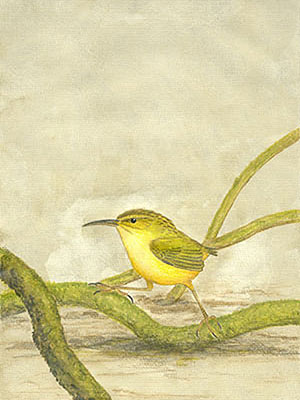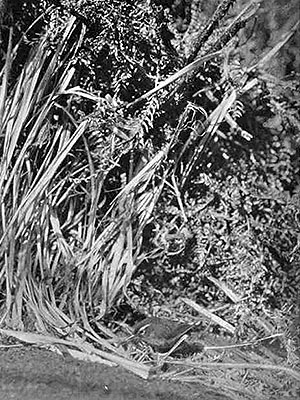Long-billed New Zealand Wren (Dendroscansor decurvirostris)
The family Acanthisittidae, endemic to New Zealand, contains of six (or seven) species, the last remnants of a once more diverse group of birds whose final refuge is the isolated islands of New Zealand.
Four (or five) of these species are now extinct.
***
The Long-billed New Zealand Wren is only known from a few subfossil bones found at four sites on New Zealand’s South Island.
The bird was a rather large member of its family and probably flightless, or at least nearly so. It used its beak to search for small invertebrates in the leaf litter or to examine the bark of rotten branches for wood-boring larvae.
An unsuspecting ground-dweller that has never before encountered predatory mammals, the New Zealand Long-billed new Zealand Wren was probably one of the first victims of the raids of the Polynesian Rat (Rattus exulans (Peale)), which was introduced to New Zealand by the Maori in the 13th century .
********************

*********************
References:
[1] Trevor H. Worthy, Richard N. Holdaway: The Lost World of the Moa, Prehistoric Life of New Zealand. Indiana University Press, Bloomington 2002
********************
edited: 11.02.2024


